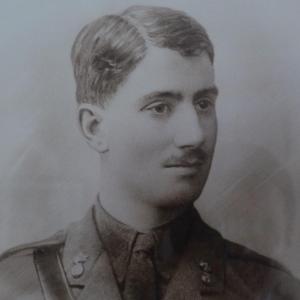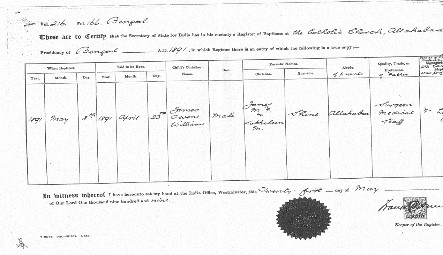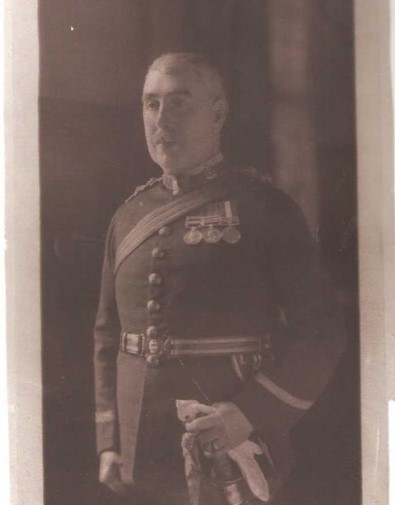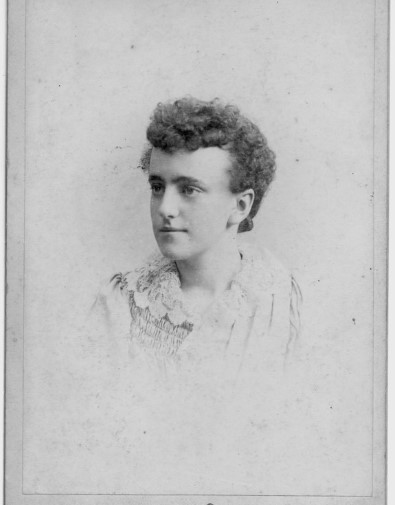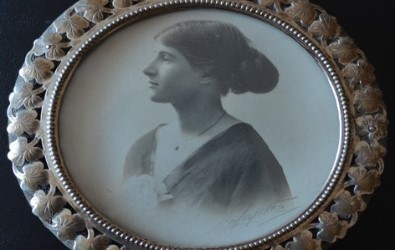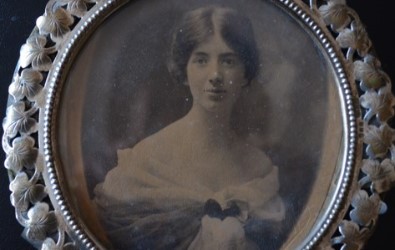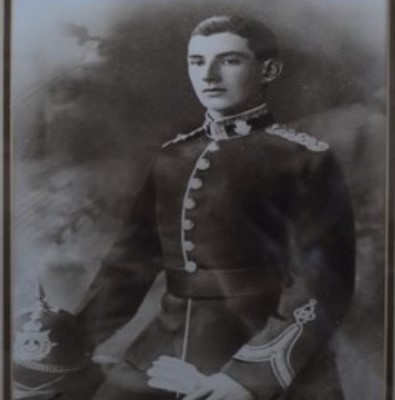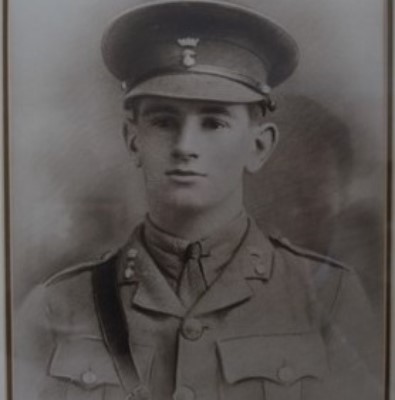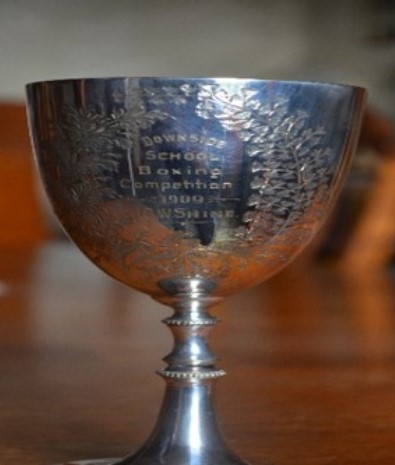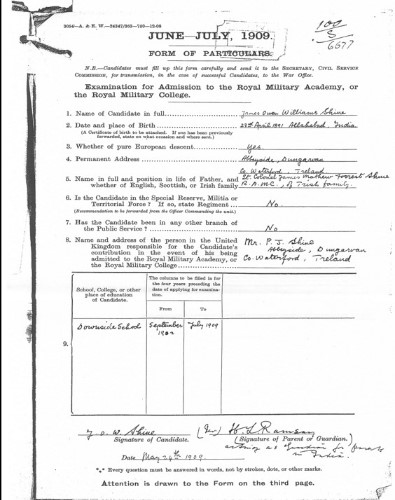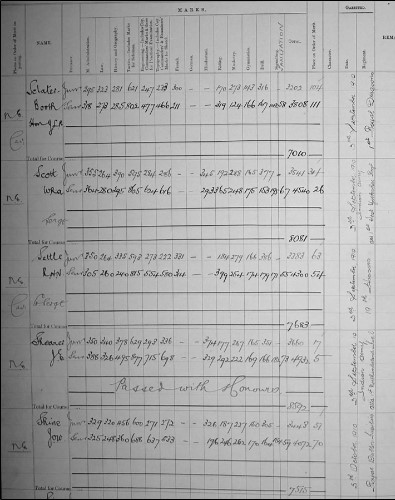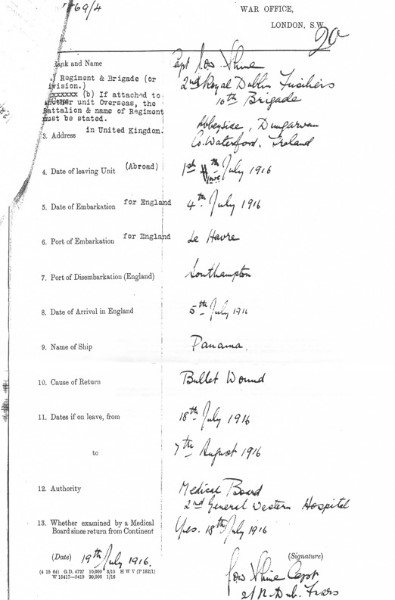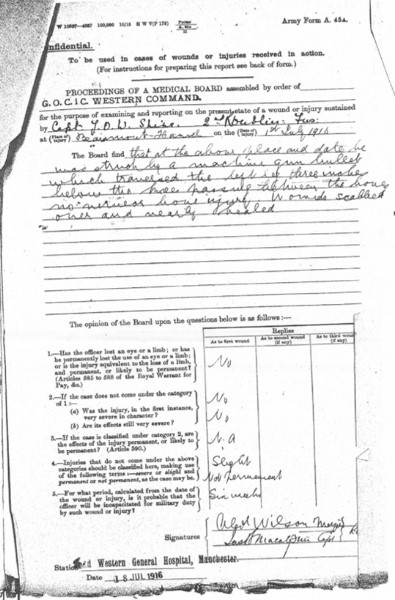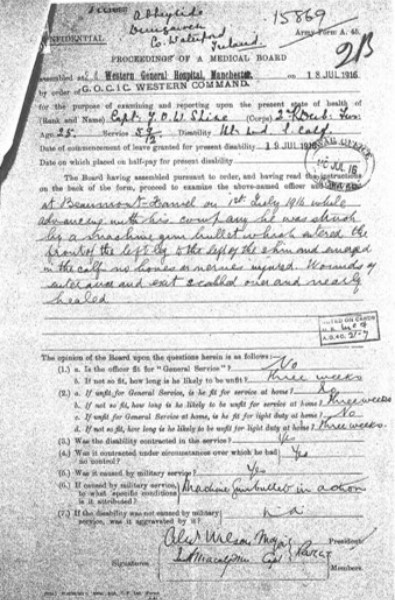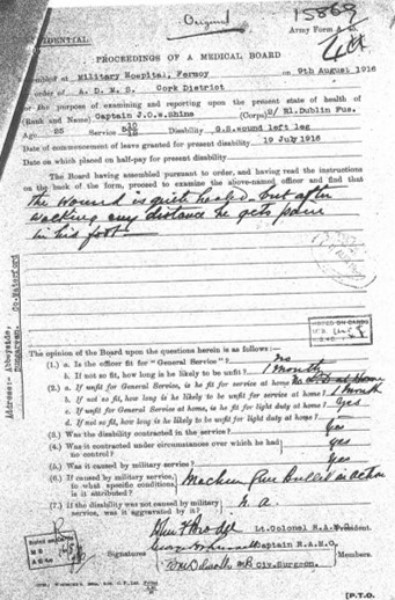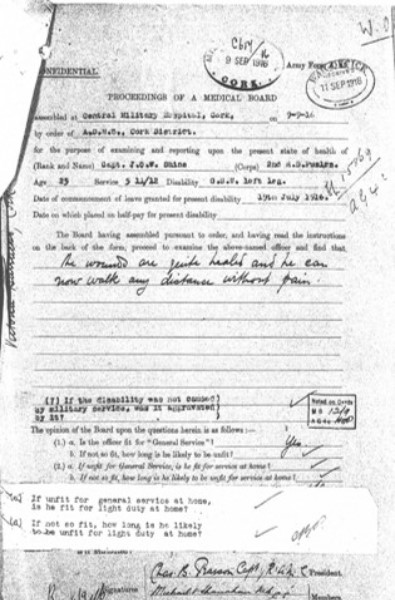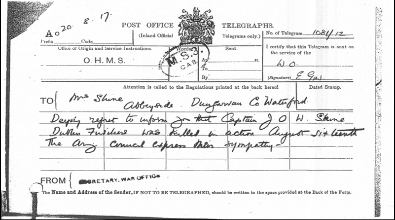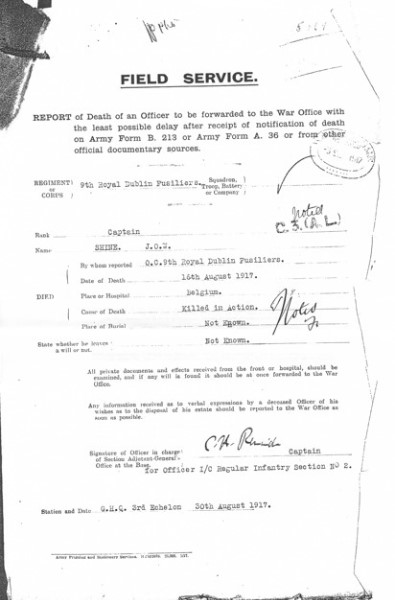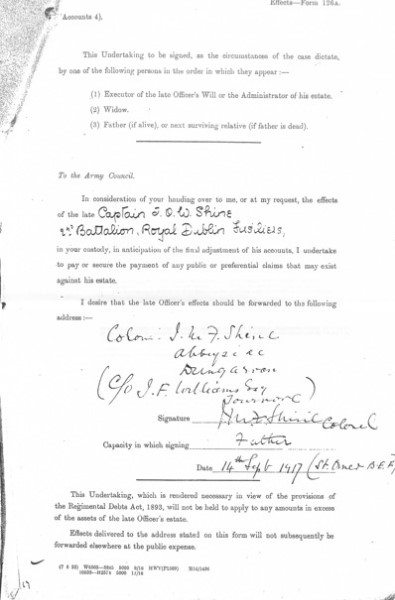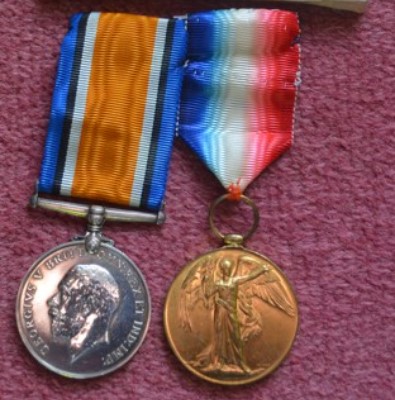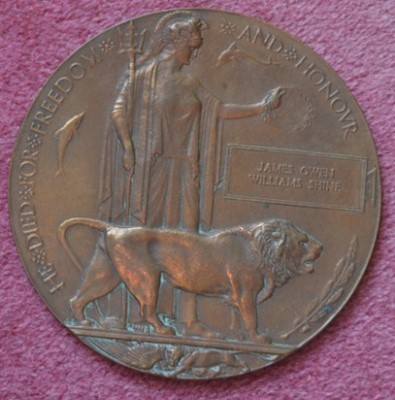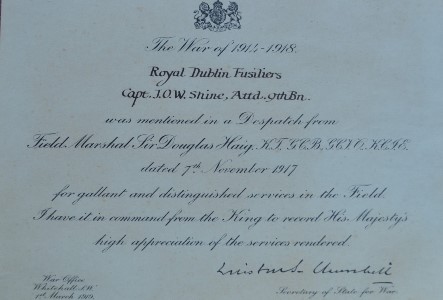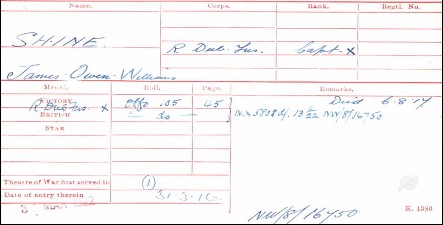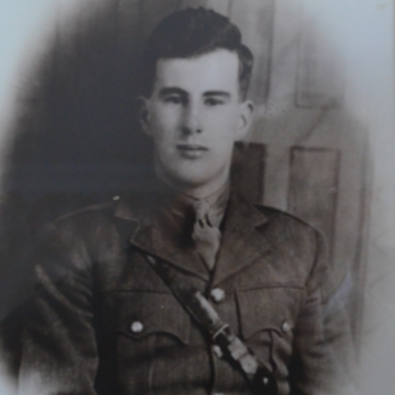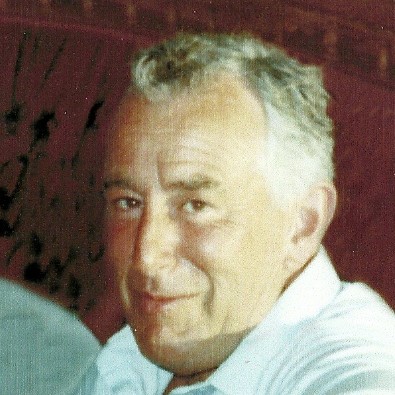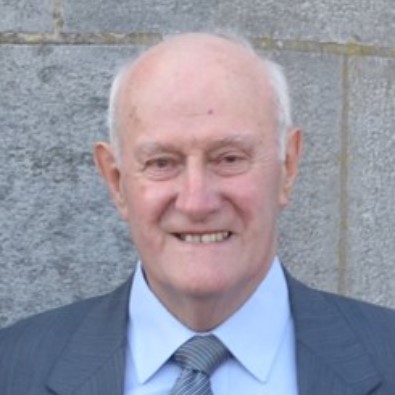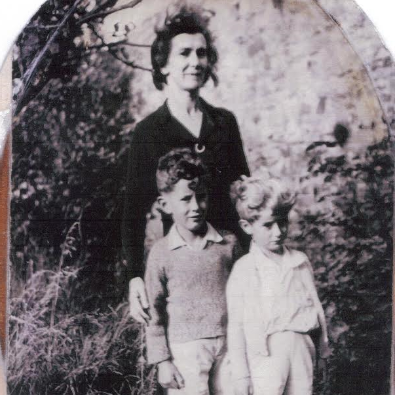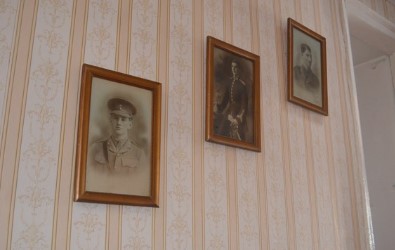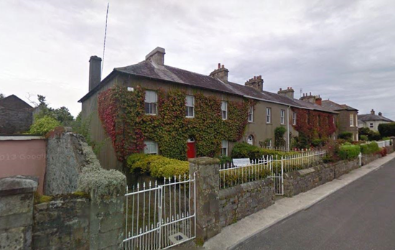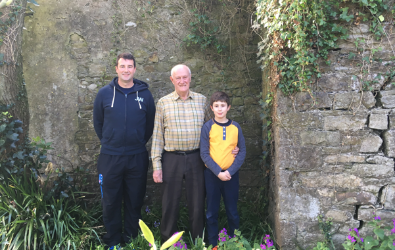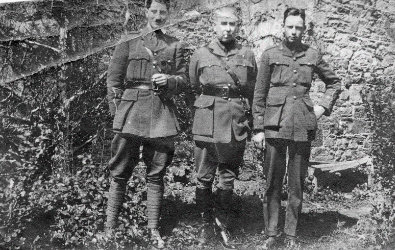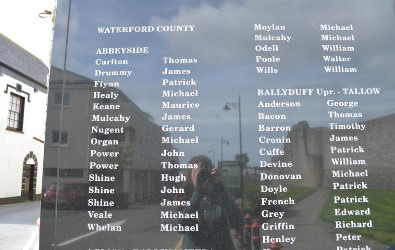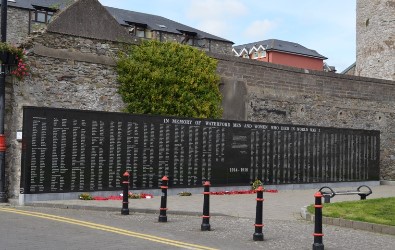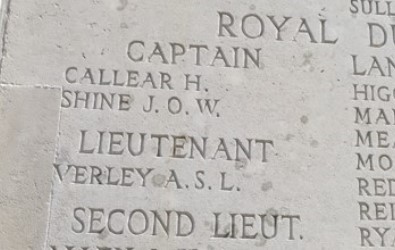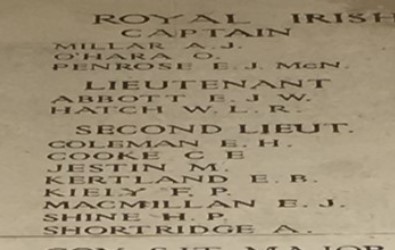my Story
My name is Sophie Shine and I was one of 15 students who travelled to Belgium in June 2017 as part of the My Adopted Soldier Project. I first was introduced to this project in late 2016 after I had done a project on my family in World War I. My teacher, Ber Glynn, encouraged me to apply to take part in the project.
Following our first meeting in Collins Barracks, I was delighted to get the opportunity to research my Great Uncle James Shine who fought and died in World War I. This allowed me to connect with my own history with a very unique experience.
A trip was organised for the 15 students from around Ireland to meet with German students in Belgium to commemorate fallen soldiers. Meeting with the German students gave us the opportunity to commemorate soldiers from both sides of the war.
We visited the EU Parliament in Brussels, walked through German trenches, visited museums and most importantly the resting places and memorials of our adopted soldiers.
My Research
As James is a relative I found it quite easy to research him. My Great Uncle Jimmy, who is James's half brother, had done a lot of his own research on his brothers and his father which was extremely helpful. One of the first things I looked at in the family home in Abbeyside was the family bible that recorded all the births and deaths in the Shine family going back to the late 1800s.
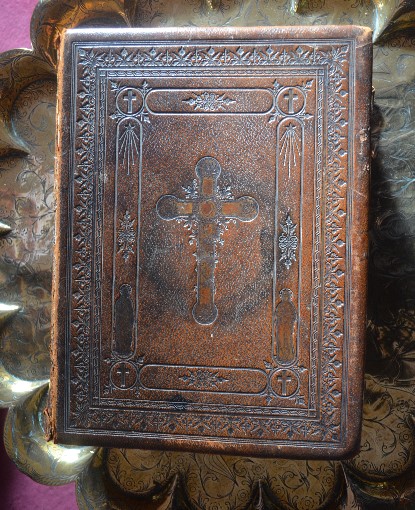
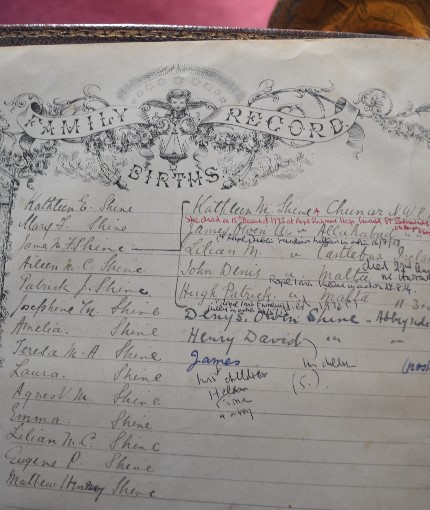
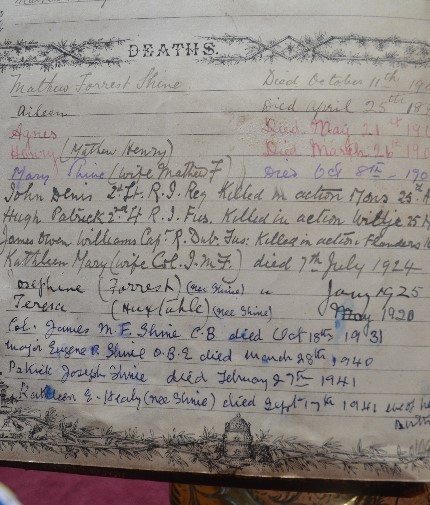
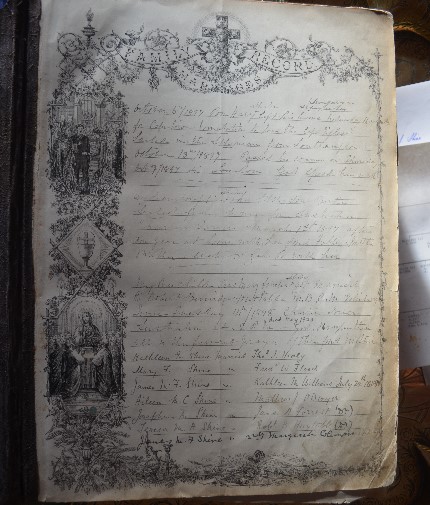
For me, history is all about the little gems of the past. It amazed me to see what my ancestors lives were like on a daily basis. As I went through the old documents in the family home I found some things that brought life to each of their stories.
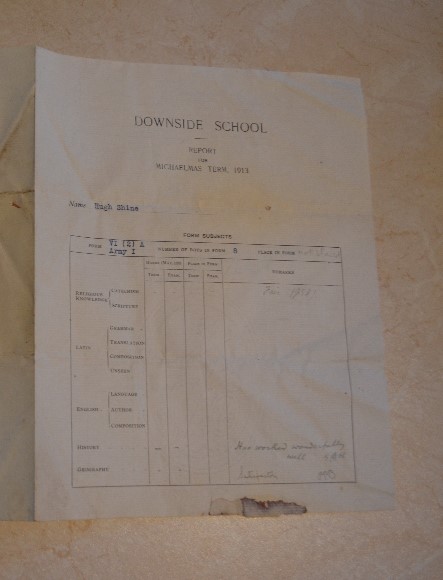
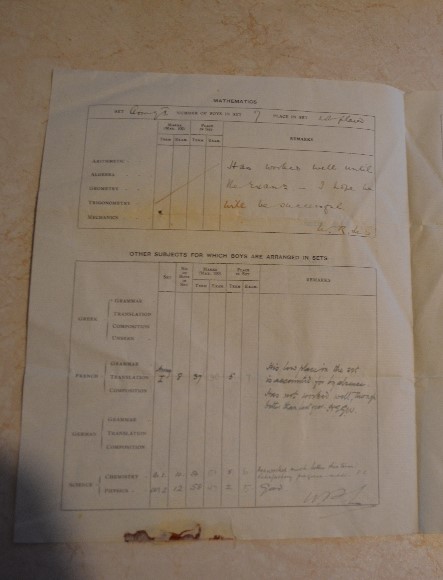
We found school reports from Downside, various letters that talked about ordinary day to day life before and during the war. I thought it was interesting that the children called their parents mam and dad, like we do today. I would have expected them to be referred to as mother and father. I enjoyed reading the diary of Kitty, James's sister, which covered one year of her life and detailed her travels from Ireland to India, where her father was stationed. It gave me an interesting insight to her life as teenager.
My Great Uncle Jim organised a memorial stone to be placed on the family grave in Waterford to remember the Shine family from that era. He was also involved in the organisation of the Waterford War Memorial in Dungarvan. The brothers are also remembered on this wall along with hundreds of others. I am happy to have been involved in this project and to have taken part in ensuring that the lives of the Shine brothers and other fallen soldiers of the Great War are never forgotten.
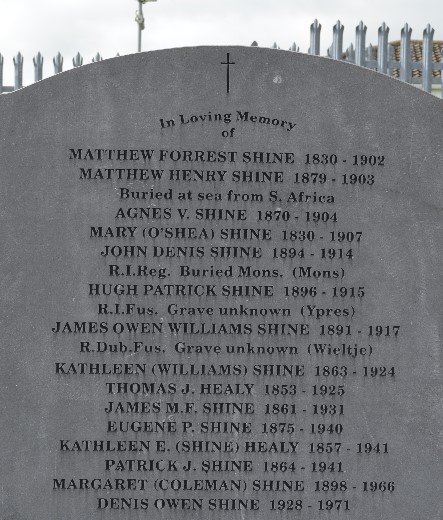
Belgium 2017
Day 1
We stayed in the Irish College in Leuven. On our first day we were brought on a guided tour of Leuven. We had some free time before going back to the Irish College and got the opportunity to have a look around for ourselves. Leuven is a beautiful place. When we returned to the college we met the German students for the first time. We all participated in a scavenger hunt around Leuven to get to know each other. In the evening some of the Irish and German students made presentations on their research.
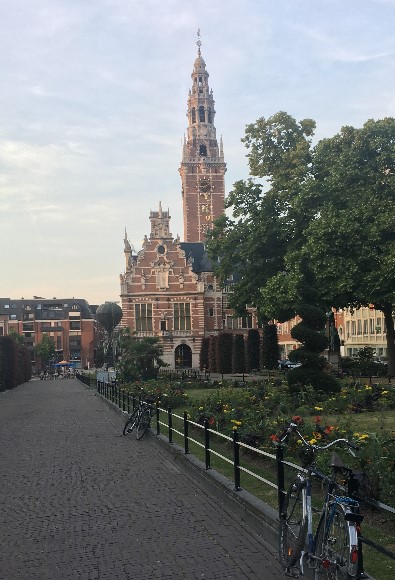
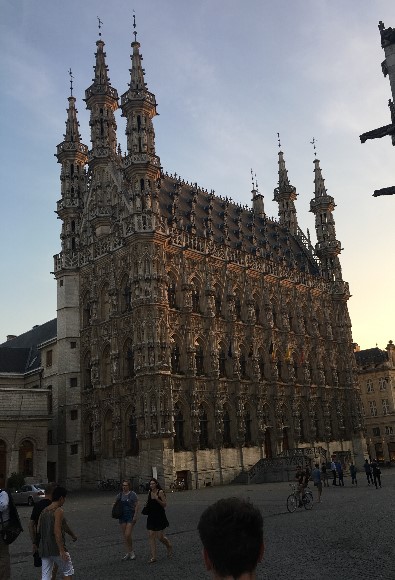
Day 2
On our second day we visited the European Parliament in Brussels where we met with Marian Harkin MEP and Gesine Meißner MEP. Two students presented their research on their soldiers. We headed off to Ypres. We visited the Island of Ireland Peace Park. We also visited two cemeteries, the Pool of Peace, the Heuvellend Tourism Office and the Bayernwald German Trenches. Finally, we visited the death cells and execution place used by the British Army in Poperinge. One student told the story of their soldier who was executed by firing squad. We also got to look inside the cells of the soldiers who were sentenced to death.
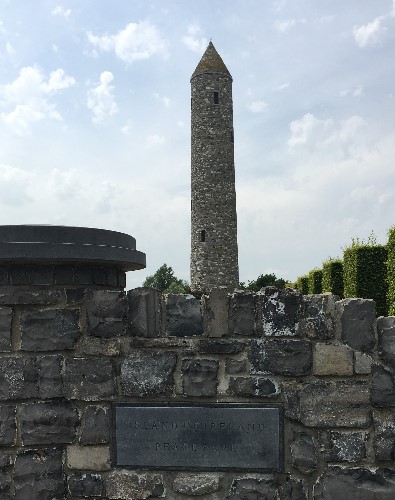
Island of Ireland Peace Park
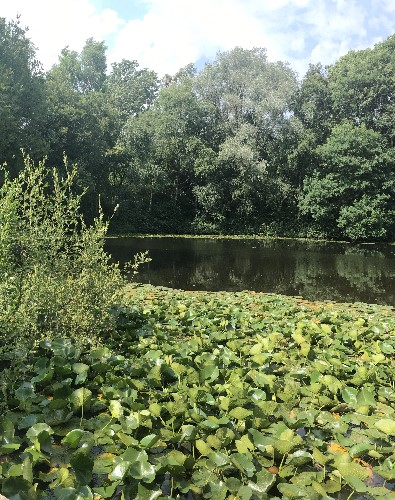
Pool of Peace
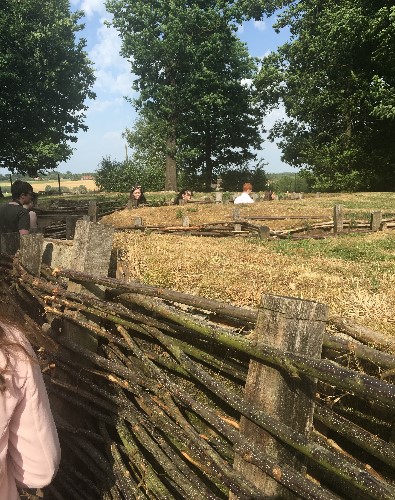
Trenches
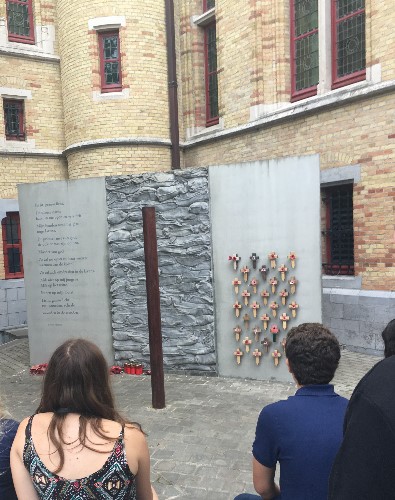
Place of Execution
Day 3
On our third day we visited a few more Commonwealth Cemeteries, followed by a trip to Vladslo Cemetery which is a German cemetery. I found there was a major difference between the Commonwealth Cemeteries and the German ones. The cemeteries where the Irish students’ soldiers are commemorated were bright and well kept. However, I found that the German cemeteries were much more bleak and sombre. We also visited Poelcapelle British Cemetery. This is where the grave of John Condon lies. He was a Waterford boy who is believed to have been the youngest soldier who died in World War I. Visiting the Tyne Cot Memorial was an important moment for me as this is where James is commemorated. Although his name is one of thousands on this wall it was an emotional moment for me as I got to make the final connection with my great uncle. I left three stones at the wall to remember the three brothers who died in the war. We then visited the Flanders Museum. Before we attended The Last Post Ceremony I had the opportunity to go to Hugh’s memorial. I didn't know if I was going to be able to visit both memorials and being given the chance to see two of my great uncles' memorials moved me. Hugh is remembered on the Menin Gate. Like James’s memorial, I left three stones at his memorial to remember the brothers. At the Last Post Ceremony Gerry Moore spoke the exhortation and a wreath was laid by an Irish and German student. I found it extraordinary that after 100 years so many people still come to remember the fallen and to pay their respects.
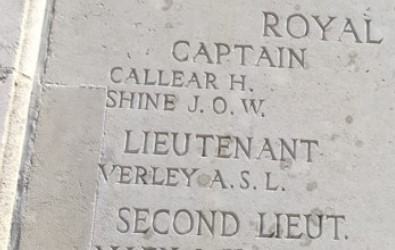
James's name of the Tyne Cot Memorial
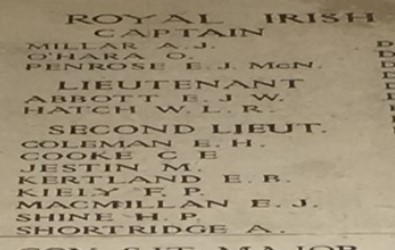
Hugh's name on the Menin Gate
I found the whole experience very interesting and thought provoking. I would like to thank everyone involved who made this trip possible and to all the friends I made along the way.
Then in the lull of midnight, gentle arms Lifted him slowly down the slopes of death Lest he should hear again the mad alarms Of battle, dying moans, and painful breath.
And where the earth was soft for flowers we made A grave for him that he might better rest. So, Spring shall come and leave it seet arrayed, And there the lark shall turn her dewy nest
A Soldier's Grave by Francis Ledwidge